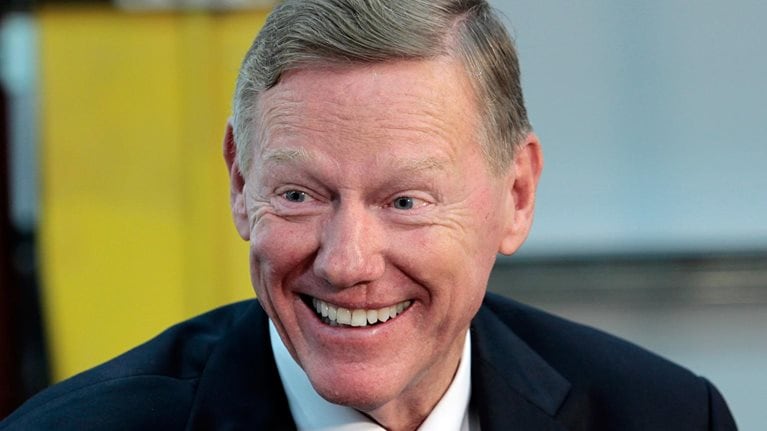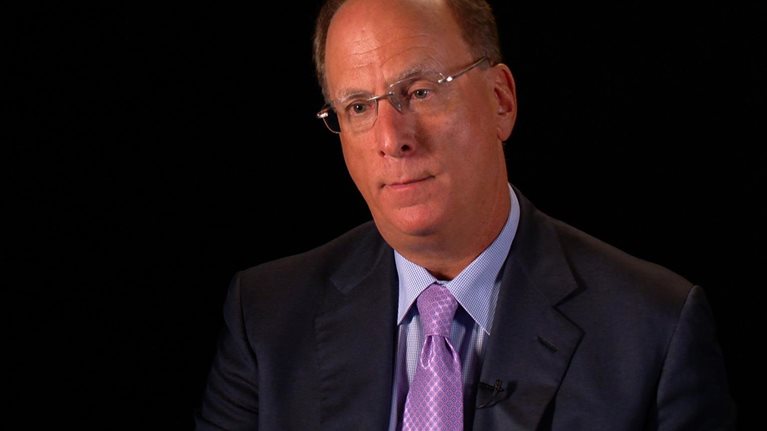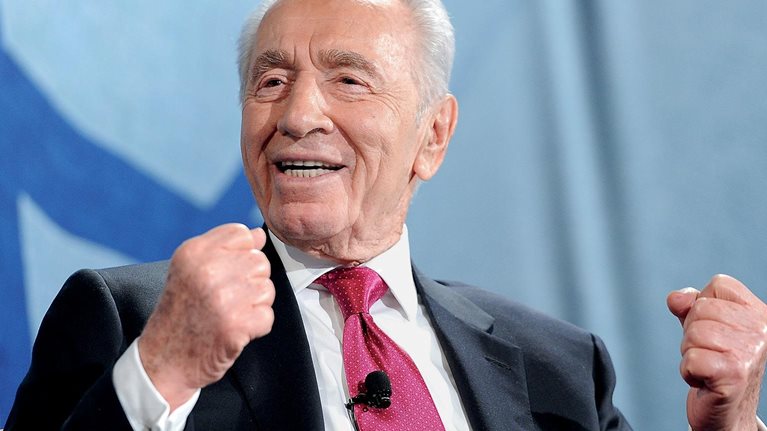Michael Useem is the director of the Center for Leadership and Change Management at the Wharton School, University of Pennsylvania. Through his academic research and the leadership programs he has led with dozens of multinational companies, he has developed a view of leadership that blends the need for fundamentals—vision, strategy, communication skills—with the evolving complexities of a globalizing world in which corporations strive to operate in scores of diverse countries. He is the author of, among other books, The Leader’s Checklist. He sat down with McKinsey Publishing’s Bill Javetski in August 2012 to scope out the leadership challenges facing executives today. This edited text interview is an extended version of the video interview available above.
Interview transcript
McKinsey: When executives ask you for advice on leadership these days, what do you tell them? Have complexity, globalization, and hyperconnectivity changed the equation?
Michael Useem: You know, some things do change and some things do not change. And on the do-not-change terrain, everybody I’ve spoken with, as well as academic research, points in the same direction: to the fundamentals of leadership for anybody, anytime, anywhere. So whether you’re Nelson Mandela or Mother Theresa or George C. Marshall or Jack Welch or Steve Jobs, [the elements are] having a vision and a strategy to go with it. This is commonplace, of course, being a great persuasive communicator, a decisive decision maker. You’ve got to have all those elements for any role where you’re helping people to get to a more promised land.
Having said that though, there are particulars that do, in effect, evolve company to company, country to country, era to era. I think as we look ahead to the next five or maybe even ten years, what is going to be more paramount—meaning, on the radar screen of people who are in the C-suite—is a world that’s certainly more complex. Think about companies that are trying to operate in 50 different markets, which is more unpredictable terrain. Think what happened with the euro in the last 12 months that many people would have never thought could possibly happen. Even more uncertain is the upside and downside of some of these market swings, of new technologies. I think the amplitude is greater now.
Putting all that together, I think the summary for me is if I want to strengthen my leadership for the next five or ten years, meaning not only in myself but in the team of people around me, whom I depend on to get the job done, I want to be better at resilience, at appraising uncertainty. I want to be better at strategic thinking and, by implication, acting strategically. Because the world is now more complicated and more uncertain, I think that on top of always having a great vision there will be a premium on thinking strategically and on being able to come back from setbacks, and maybe above all, on being very good at reading the increasingly ambiguous and uncertain universe we operate in.
McKinsey: Of these elements you pinpoint, the idea of resilience does not seem like a traditional quality of leadership. Why is it so important today?
Michael Useem: You know, if we were talking about leadership 10 years ago or 15 years ago—when the markets were more predictable, less uncertain—we wouldn’t have been talking in the same way about comeback, resilience, and standing strong when conditions are tough.
Now, because of the uncertainties in markets, and the fact that we’re operating in 50 different markets in the case of many large firms, all of which work by different principles and different cycles, and given the fact that we’ve all been through some catastrophic events, such as 9/11, Katrina, the problems in Fukushima following the tsunami in Japan, and certainly the aftermath of the failures of a number of financial institutions in the fall of 2008, the leadership qualities of standing strong, coming back from adversity, being focused on a better place ahead even if it looks terrible now, all those features or those facets we tend to sum up in the word “resilience.” These are the vital elements of the last couple years for anybody with responsibility for just about anything in the private sector.
The quick summary is: we wouldn’t have talked about resilience as a vital element of leadership 20 years ago. And now a leader’s calling, if nothing else, is to be resilient when things are unpredictable.
McKinsey: What does research show about the link, if any, between personal leadership and value creation?
Michael Useem: The two questions I get asked most often when working with companies and governments in the United States and abroad are, number one, does leadership really make a difference? And number two, if the answer to that is affirmative, how do we get more of what we call leadership?
Boards sometimes don’t pick well when a chief executive steps down; a successor who looked good turns out not to be good. And then 12 months, maybe 24 months later the board, appreciating the error of its ways, pushes that first successor out and brings somebody else in.
The difference within 12 to 36 months is as much as 10 to 15 percent upward or downward in the internal metrics of performance, whatever they may be. Think of it this way: the right CEO successor with the right leadership skill set versus the wrong leadership successor with the inappropriate or not full leadership repertoire can lead to as much as a 30 percent variance in performance.
As you follow up on that, what does it mean to get it right? What are the vital leadership qualities? Then the question is very tangible: how do you build those leadership qualities in the team that reports to you, and then in the high-potential people who are coming through the system and who will one day run the company?
McKinsey: How must the leadership equation take into account different geographies?
Michael Useem: If you’re going to lead a company in a different country, or if you’re going to lead a company that operates in a number of countries, does that require a distinctive skill set? My research indicates that there are significant differences, given a common platform, in the way you’ll lead in China versus India or Brazil or the United States.
Of course, you can’t lead in India or China or the United States without a vision, a strategy for getting there. You’ve got to be pretty good at communicating, and you have to be decisive. That’s the common platform.
Alongside that are the distinctive, special skill sets that you need. With three colleagues, I took a very hard look a year ago at what it takes to lead a large business enterprise in India. From that deep dive we concluded that there are four additional skills required to succeed in the Indian context. To pick one, if you’re not good at improvising, at getting around roadblocks, at keeping production going when the electricity is shut off, as just happened, you’re not made for running a business enterprise in India. In the United States we don’t have a host of problems that require band-aid solutions. In India, you really have to be good at improvising.
China—different story. Because so much of even nominally private enterprise in China has a strong relationship to a government ministry or a government agency, if you can’t work effectively with the mayor of the city where you operate or with a ministry where you have a very strong tie, you are not destined to lead well in that context. It’s not required in the United States, but that is a skill set required of leaders of private enterprise in China.
McKinsey: What about board leadership?
Michael Useem: The issue of the board of directors and its leadership of the company is something we would not have talked about 10 or 15 years ago, maybe even 5 years ago. The function of the board is to govern, to monitor, to ensure that shareholder value is protected and increased.
And if you look at legislation in this country and elsewhere, Sarbanes-Oxley above all, and at the listening requirements on the New York Stock Exchange, the more recent Dodd-Franks legislation, the focus is on making directors more vigilant, more independent, and stronger as monitors and managers. And we all applaud that. It’s been a very important development, it’s been pushed by big holders for a couple decades. Having said that, as boards have become stronger, more independent, more able to make decisions because they’ve actually become a bit smaller—11 members tends to be the sweet spot now—they have also become more capable of rendering strategic advice to top management.
Turn that around, given that the world is more unpredictable and complex: those in the executive suite in the last four or five years have more often turned to the directors in the boardroom for advice. “Should we go into Brazil? How do we create a supply chain in Japan?” And a good boardroom will have people that have been through some of those issues on their own, wherever they may have led before. We look at the board of directors historically as a good protector of investor stakes in a company. That’s its function legally. But in addition to that, in recent years, I believe that boards have become increasingly strategic partners for top management, prepared to think about strategy, prepared to provide coaching to top management, able to influence talent-development programs. But more generally to work side by side with top management to lead the firm.
McKinsey: Trust in business is very low. How should leaders go about restoring it?
Michael Useem: Why is trust really vital for a company, trust defined as public trust, as employee trust? Anyone’s experience, and academic research says the same thing, is that [with trust] you’ve got more latitude as a leader, you can get more things done. You can act quickly without having to explain everything yet again. If people have confidence in who you are, they trust you. A way not to build that trust, or a cynical view of trust, is to tell people to trust you. To tell people that you’re not a crook. As soon as a chief executive says, “Trust me,” most of us—investors, employees, customers—are going to duck for cover.
Now turn that around and ask yourself, “How is trust engendered? Or, in a period of distrust, which is where we are right now, how can companies, managers turn that around?” I would in the affirmative suggest this: for people to want to follow you, for people to choose your company, to buy your product, who you are as a person, as a top-management team, as a customer representative, has a huge impact.
Putting this into a leadership context, the challenge is: how do you communicate your character? How do you tell people effectively that you’re a person of integrity, a company of principle? I believe that the confidence that people will have in you, the trust they will have given to you as a person or as a company comes from consistent communication of the underlying values of the company.
There is no silver bullet, nothing that will turn mistrust into good trust. But over a period of time, consistently communicating your good character, as well as the character of everybody all the way down to the front line, I think this is the formula for bringing us back from where we are now.
McKinsey: What does leadership look like today in, say, the financial-services sector?
Michael Useem: At the World Economic Forum in Davos, in January 2010—about a year-and-a-half after the problems that followed the Lehman failure—several of the bankers that I saw there said that they are among the few banking executives willing to come out in daylight.
But here’s the optimistic view of the world: confidence is created. It doesn’t descend from heaven. And lack of confidence is created. It didn’t just come from nowhere, out of thin air. A case in point for me is the aftermath of the scandal at Tyco International in 2002. Tyco, then a 260,000-person company, found a new CEO, a new senior VP for corporate governance, a new board, a new lead director and turned that company around over the next couple of years through extremely hard work, going from one of the worst-governed to one of the best-governed companies in the United States.
So we have cases in point where companies have come back from the brink after being widely criticized, emerging from what they were and moving toward what they could become. I think in financial services it’s going to happen. It’s going to take hard work, but it will get done.
McKinsey: What leadership role models come to mind?
Michael Useem: If we turn the clock back on American business—let’s make it 30 or 40 years—it was an era that was more predictable, more stable. People joined Xerox and worked there for life, for example, or Kodak. That era is gone. But one of the great features of that earlier era in American business history is that the major associations of business, topped by the Business Roundtable, would pull together and think about common agendas.
The power they have to guide public thinking and legislation has, I think, given way to the fact that companies are under a lot of pressure from big institutional investors and have had to cut back in their public-spiritedness. But there’s an argument—and I’m an adherent of it—that that may have gone too far. The pressure has focused companies probably too much on the bottom line, too much on meeting quarterly analyst expectations, and this has cost us companies paying attention to what the country needs or what the world needs or certainly what the community requires.
That is why people like Howard Schultz at Starbucks stand tall and hopefully exemplify a role that executives can play in the future. Howard Schultz has initiated a campaign—you can see it if you walk into just about any Starbucks store—to ask patrons to put money into a fund, along with his own contributions, to hire more people who are unemployed in inner cities. That’s noble. That’s important for the future of America.
That’s not the job of Starbucks itself. But Starbucks is playing a role in its own way in helping to address a huge public problem, in emphasizing the responsibility we have when families have no money to put food on the table. I think that Howard Schultz and those he has drawn to the cause exemplify maybe a return to an earlier era, where top executives saw their calling as not only running their companies, not only delivering great total shareholder value and returns but also playing a role in ensuring that we all have a collective future together.



